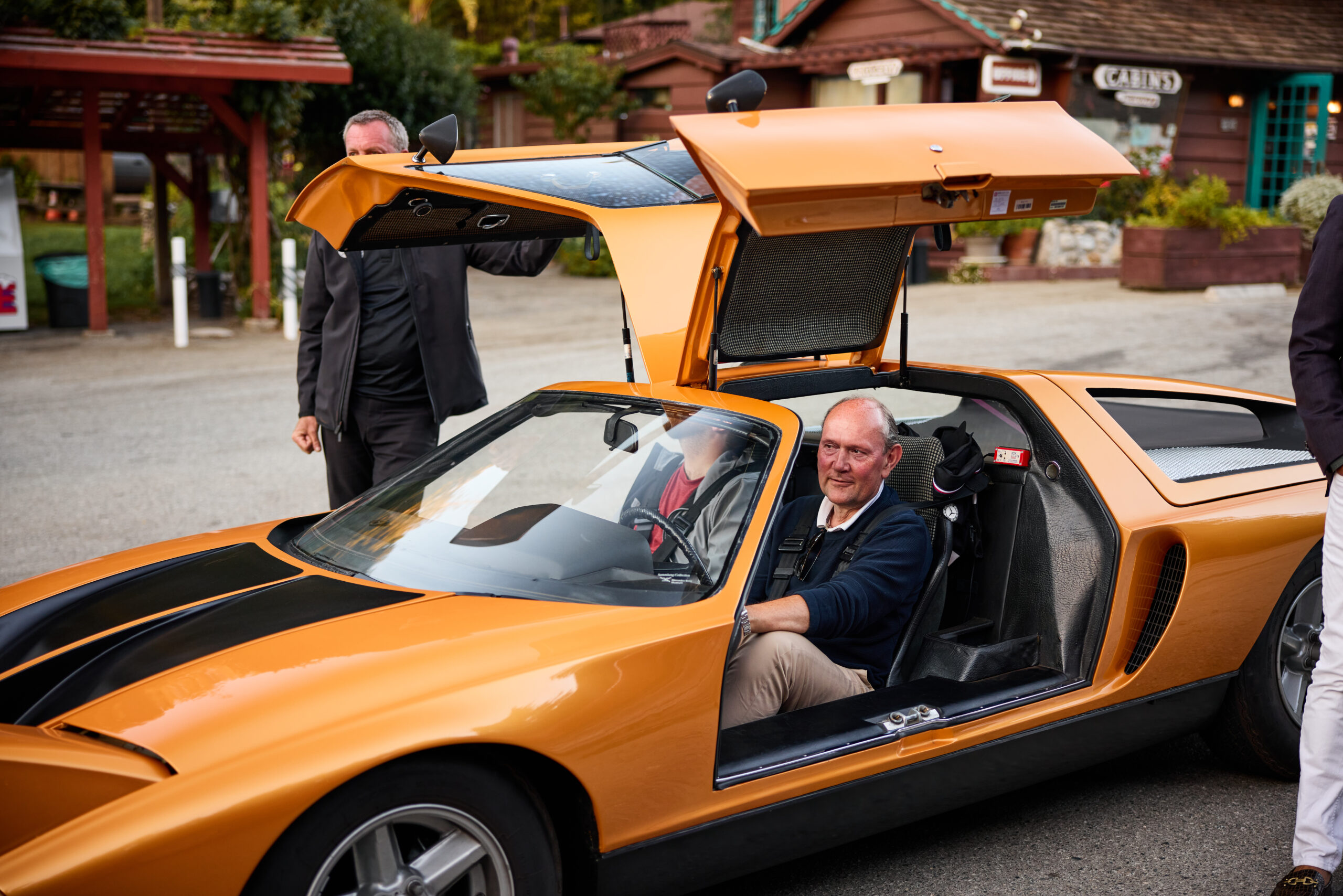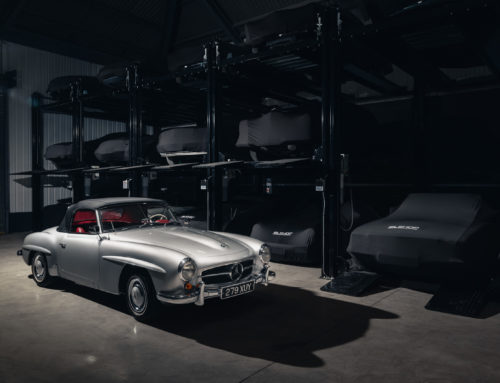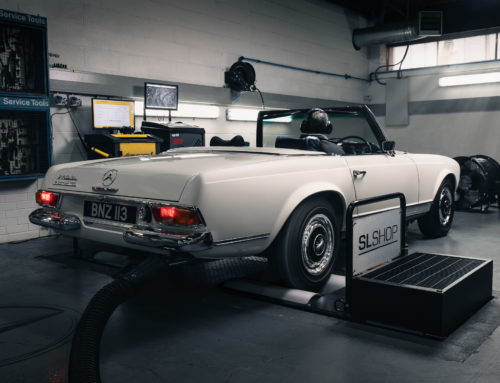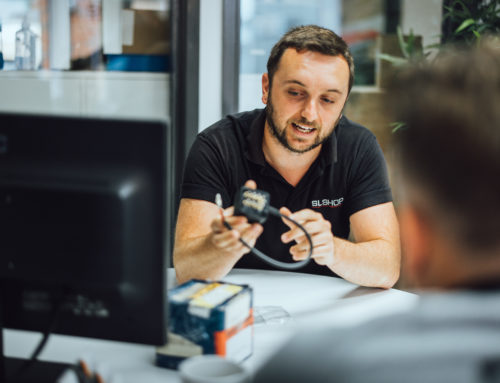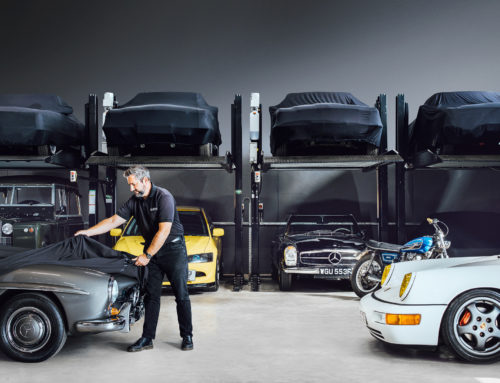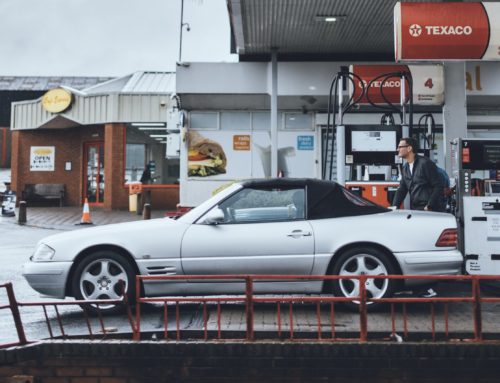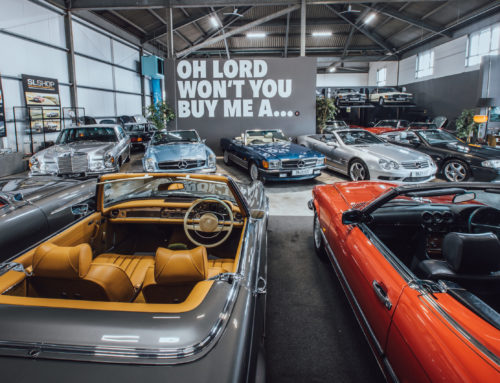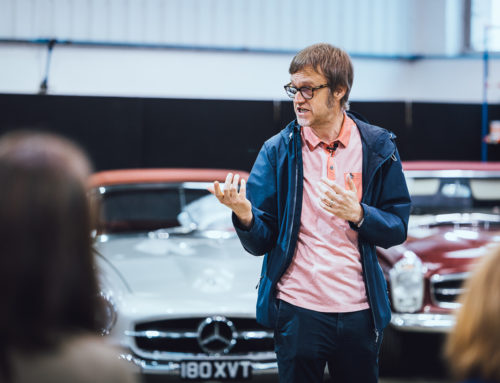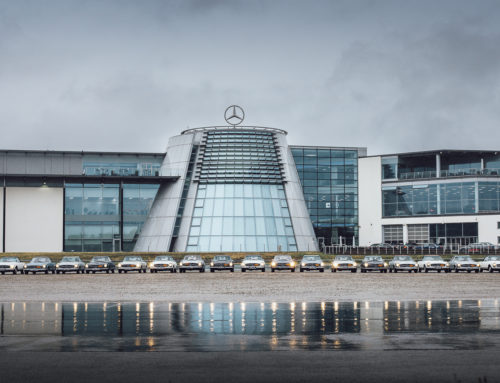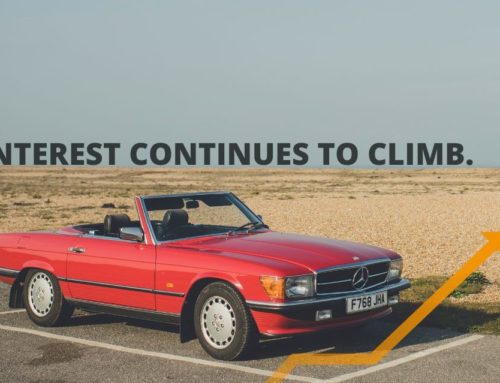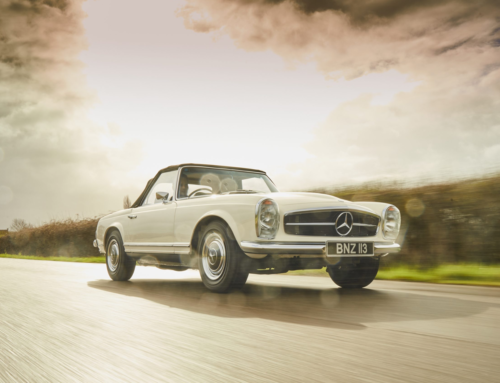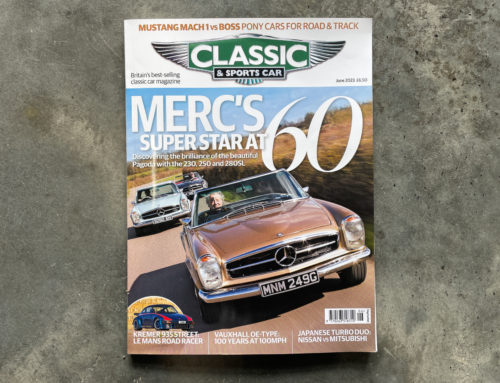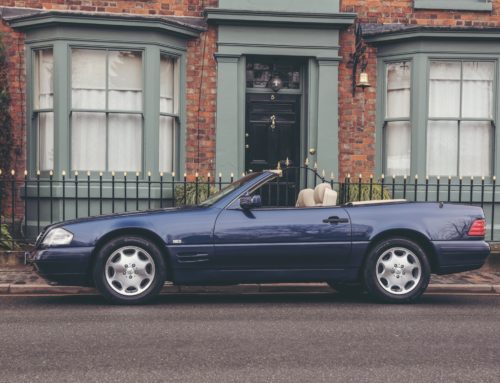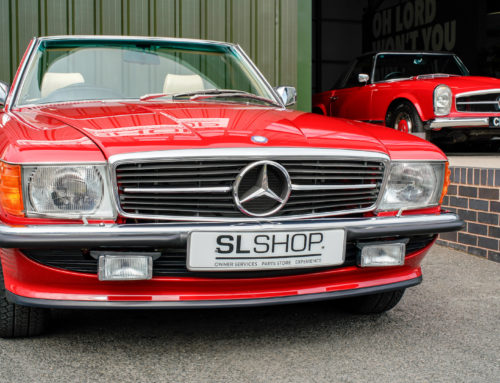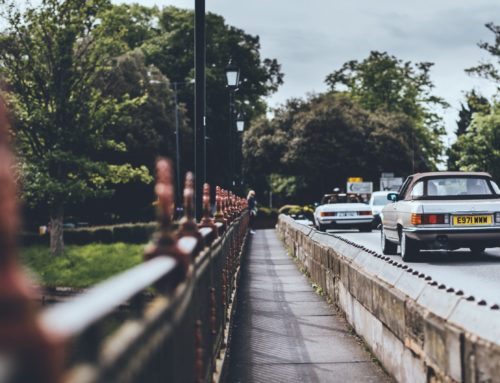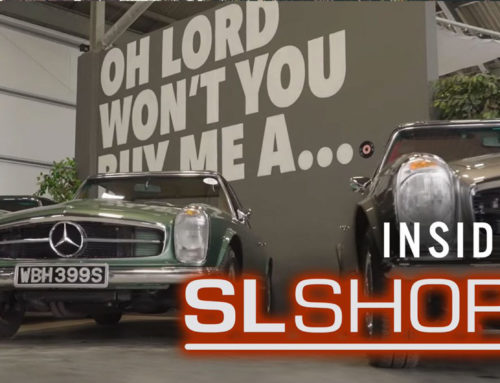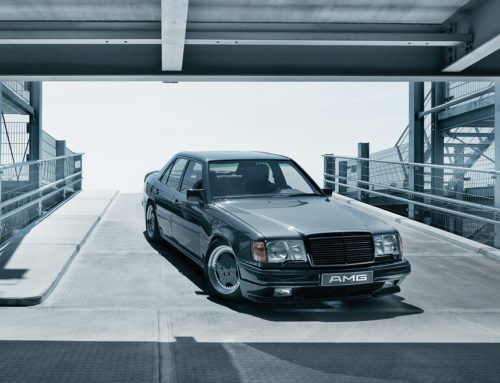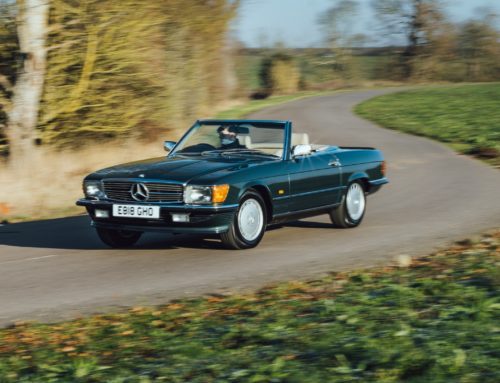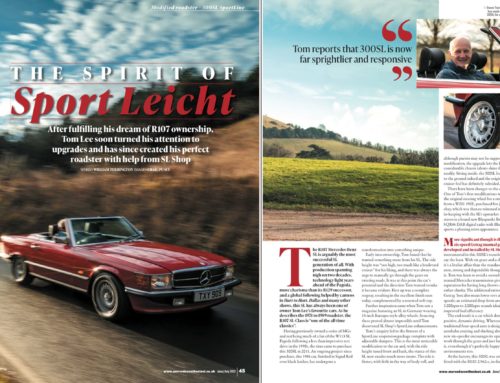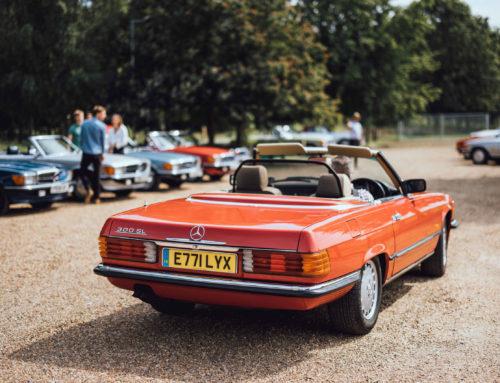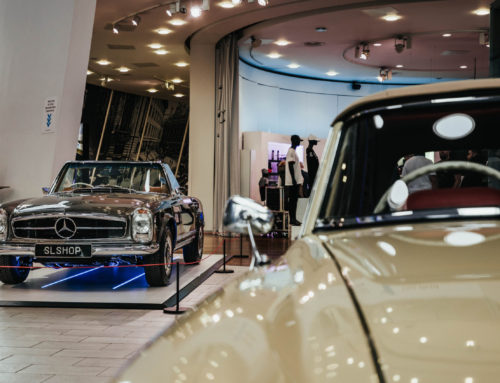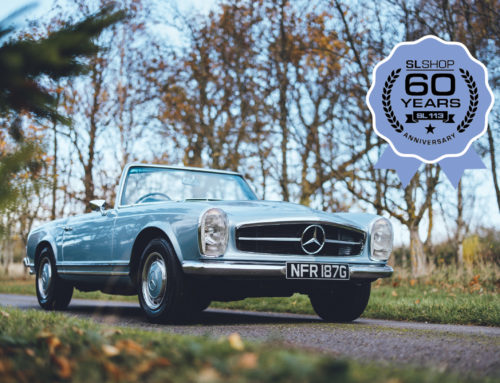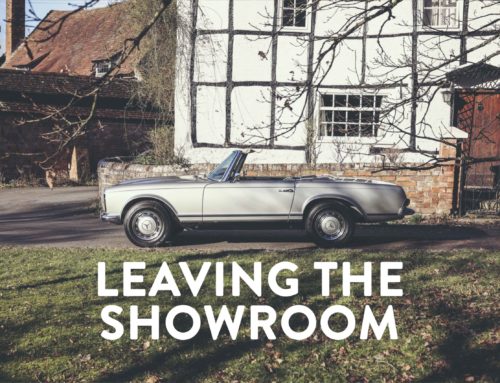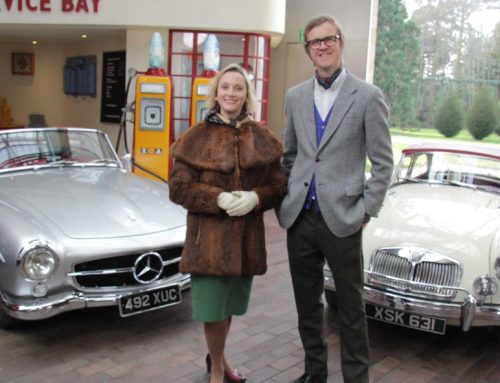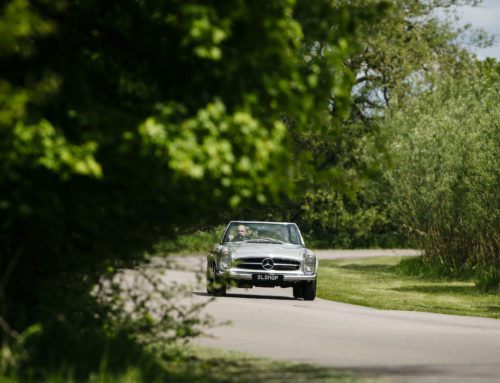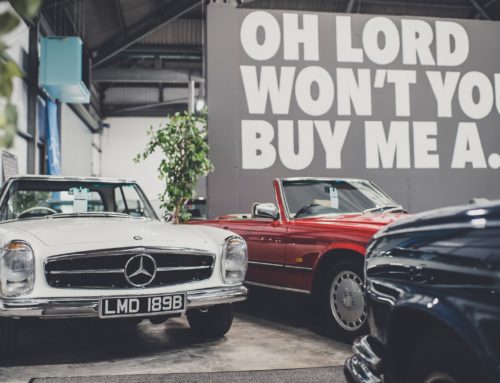Interview conducted by Kyle Fortune at the end of 2022.
“One of the five best days in my life was the day I got my driving licence, I’ll never forget it,” says Marcus Breitschwerdt. He explains that after passing his test he immediately went home and took his mother out for a drive in her yellow Volkswagen Beetle. Most of us can likely relate, those of us afflicted with a love of driving and automobiles, Breitschwerdt’s comment underlining that he’s one of us, as does the fact alongside his company S-Class, there’s a Pagoda SL in his garage.
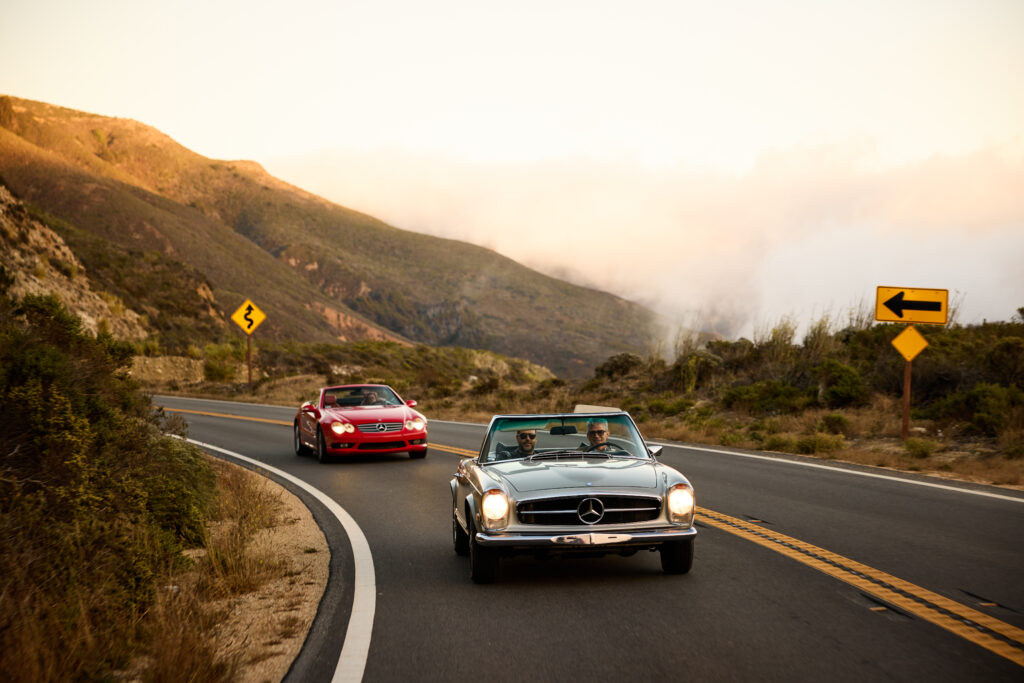
Photo taken from Daimler Benz press site.
That’s satisfying to know because after a lifetime with Mercedes-Benz rather than being allowed to retire to split his time between farming in Canada and enjoying London, Breitschwerdt was asked by Mercedes-Benz CEO Ola Kallenius to take a new role heading up Mercedes-Benz Heritage. That position sees the Museum and Classic now gaining representation at board level, something it’s never had before, demonstrating the value that Mercedes-Benz places on its heritage.
Breitschwerdt’s office is within the Mercedes-Benz Museum, Stuttgart, it being just a few miles from where he grew up. The job is, he explains: “the first I don’t do for money, it’s a pleasure coming to work every day.” It’s not that he didn’t enjoy his previous roles, and his office is testament to that, with some incredible commissioned native art with a Mercedes-Benz theme from his time as President and CEO in Canada, a wooden plaque with ‘Beating the competition. Together.’ which he furnished every meeting room in the UK with, where as President and CEO he transformed the company’s fortunes in the UK. He also set up Mercedes-Benz Cars Europe, headed Mercedes-Benz Vans and has lead the company’s environmental and marketing strategies.
He’s not been in his current role for very long, but in the short time he has he’s certainly made an impact. It was Breitschwerdt who was instrumental in arranging the sale of the 300 SLR Uhlenhaut, that car, one of two built under chief engineer Rudolf Uhlenhaut selling at an auction held in the museum for a record sum. Significantly, the €135M sale price making this Mercedes-Benz the most expensive car in the world, but also being the seed for a new Mercedes-Benz Fund.
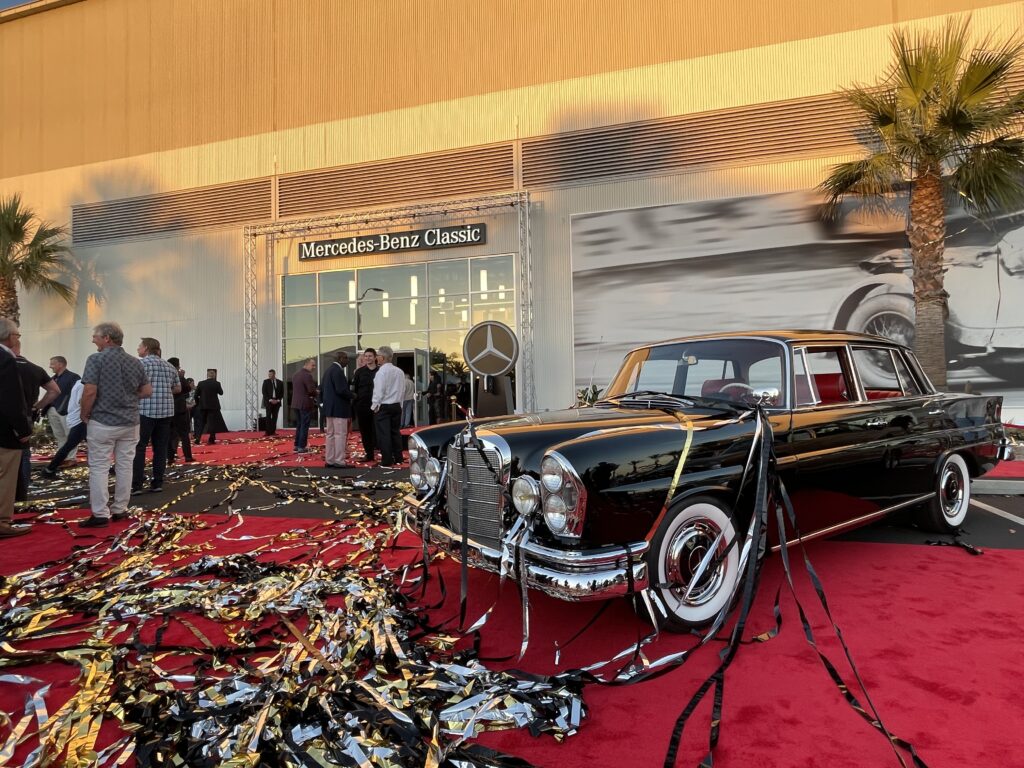
Breitschwerdt explains how the sale came about, saying: “Since such cars have existed we’ve always had offers from people to buy them, at any money, and we’ve always said no. Last year, we were re-organising what we call ESG (Environmental Social Governance) and we asked the question what shall we do? The world is in interesting times, I said, listen, looking into our own history, and heritage, heritage is not just cars, it is remembering where you are coming from. Remembering that Daimler had not been able to gain higher education so he got it through scholarship based on his capacity as an apprentice. Maybach was an orphan, who was given advantages and opportunity when his technical ability was recognised, so, support and scholarships for talented not privileged people is hugely important, we said we shall set up a Mercedes-Benz fund to allow talented people who don’t have the privilege to really follow their interests and talent. We’ll give them the opportunity to do so.”
That recognition and understanding of the company’s history is fundamental to Breitschwerdt’s position in the company, as much as its heritage is key to the company while it transitions to adapt to the new mobility reality of electrification. Walking around the museum, Breitschwerdt’s passion for the company, and history, is very clear, his detailed explanation of the various evolutionary stages in Mercedes-Benz history withing the wider social and cultural landscape is enlightening, and encompasses the company’s drive in relation to safety, economy, luxury, volume and how all that manifests in its push to electrification and brand repositioning, today.
He’s quick to note how important it is to listen to customers, highlighting the first car to bear the badge, Mercedes, was a result of exactly that, explaining: “The value chain starts in the market, you have to do what the customer requests. Austrian Diplomat and keen gentleman racer, Emil Jellinek, drove Daimler cars. He came all the way to the factory to tell the engineer Maybach that he needed a different concept. A lower centre of gravity, a wider stance, stronger engines, stronger brakes, easier to be handled, and Maybach did it and called it Simplex, because it’s more simple – even though it’s not – it’s very fast, strong engine, a low centre of gravity. It was Mr Jellinek who told the engineers ‘that’s what I need’, and it’s the first modern automobile. He won races in that car, ordered quite an amount of them, and asked to become a dealer and to sell cars under his daughter’s name ‘Mercedes’.” He laughs, saying that it’s a good thing that Jellinek’s daughter had such a lovely name.
The other significant instance of Mercedes-Benz listening to its customers came in the post-war years, when, again, a customer would visit Stuttgart with a request. That individual was Max Hoffman, a US car dealer who said to Mercedes-Benz: ‘bring the brand back to where it used to be’. Breitschwerdt said Hoffman had seen Mercedes-Benz race vehicles and requested a road version of it to sell to wealthy customers in the USA. The tubework chassis of the racing cars necessitated the use of gullwing doors, and Hoffman also insisted that the car would feature a strong engine, the result being the 300SL, or Gullwing, as it would famously become known.
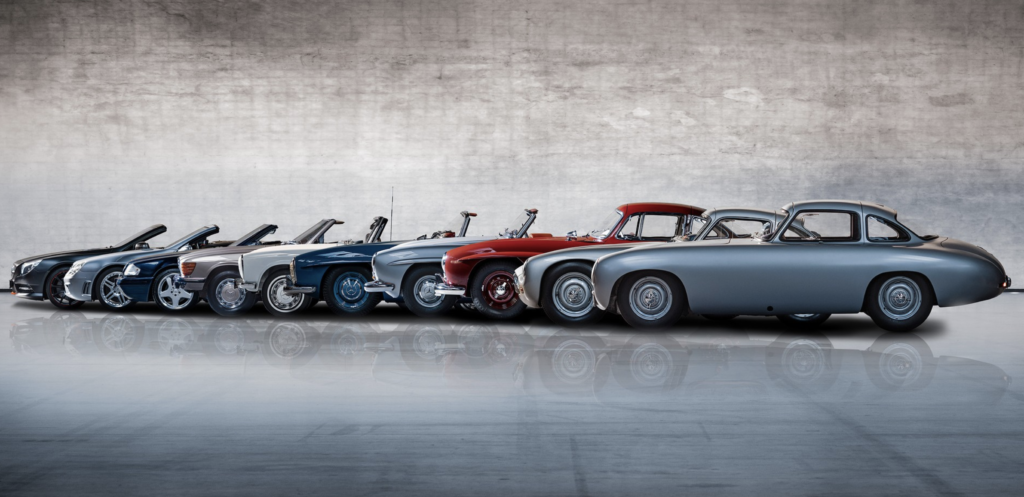
Courtesy of Mercedes-Benz
Its enormous success, and the subsequent 300SL Roadster and cheaper 190 SL that were also the result of Hoffman’s demands are, says Breitschwerdt, instrumental in shaping Mercedes-Benz into the company it is today. He says: “the SLs reignited Mercedes-Benz as a luxury brand worldwide, had that not happened the company could have looked very different today,” adding: “the most iconic cars we have were impacted by customers.” The SL badge is instrumental in the company’s existence, then, as well as its future, that Uhlenhaut sale demonstrative of that, and as the company tackles its next challenge, that of electrification and its push to ‘pure luxury’, Breitschwerdt says its heritage is as important, if not more so, than ever.
“We’re more than just a museum, this has a function for the organisation, for us is we see major changes in our work, we reposition our brand to pure luxury, it used to be luxury, then since the early 90s it was premium luxury, which then was the right thing to do to take on the challenge from Japan, but now we go back to Pure Luxury.”
He explains that in the transformation to electric mobility there are challenges, as while batteries and electric motors provide huge luxury thanks to their refinement and performance, there are other issues. He says: “Our new EQS, it’s a wonderful thing, but what you touch inside is plastic. To make clear how you reposition to luxury, and how you explain that we’ll be more battery electric and connectivity is a certain way to incorporate ultimate luxury in our cars, that’s what have to do, using our strategic corporate position, having the history, having the collection and having the experience.” He cites a fantastic example of a brand’s transition, invention and luxury, saying: “In other areas of luxury goods you have a similar situation. In a time when you had the suitcases and boxes outside the vehicles, you needed robust, water repellent luggage, this person realised that wood, leather and textiles are not very good materials to produce resistant reliable luggage. One company invented a revolutionary, early, new material, the cooperation still exists, it’s called Louis Vuitton and the revolutionary, expensive new material is still around, it’s called plastic. It’s a special plastic, but it is plastic (monogram canvass). It is still understood as pure luxury because it’s produced for good reason, not to betray or rip-off the customer, but rather to deliver the best possible solution to the challenge.”
He continues: “That’s what we’re going to do, use our heritage of pioneering, of invention, of problem solving and positive attitudes to future development, this is why we are very happy and confident that we can show over the 136 years how invention and re-invention and change and change again has helped to find viable solutions to create satisfaction and fulfilment for our customers.” Oh, and he admits, too: “And we also have a lot of fun, but we don’t talk about that…”
Share With Your Fellow Enthusiasts
Interview conducted by Kyle Fortune at the end of 2022.
“One of the five best days in my life was the day I got my driving licence, I’ll never forget it,” says Marcus Breitschwerdt. He explains that after passing his test he immediately went home and took his mother out for a drive in her yellow Volkswagen Beetle. Most of us can likely relate, those of us afflicted with a love of driving and automobiles, Breitschwerdt’s comment underlining that he’s one of us, as does the fact alongside his company S-Class, there’s a Pagoda SL in his garage.

Photo taken from Daimler Benz press site.
That’s satisfying to know because after a lifetime with Mercedes-Benz rather than being allowed to retire to split his time between farming in Canada and enjoying London, Breitschwerdt was asked by Mercedes-Benz CEO Ola Kallenius to take a new role heading up Mercedes-Benz Heritage. That position sees the Museum and Classic now gaining representation at board level, something it’s never had before, demonstrating the value that Mercedes-Benz places on its heritage.
Breitschwerdt’s office is within the Mercedes-Benz Museum, Stuttgart, it being just a few miles from where he grew up. The job is, he explains: “the first I don’t do for money, it’s a pleasure coming to work every day.” It’s not that he didn’t enjoy his previous roles, and his office is testament to that, with some incredible commissioned native art with a Mercedes-Benz theme from his time as President and CEO in Canada, a wooden plaque with ‘Beating the competition. Together.’ which he furnished every meeting room in the UK with, where as President and CEO he transformed the company’s fortunes in the UK. He also set up Mercedes-Benz Cars Europe, headed Mercedes-Benz Vans and has lead the company’s environmental and marketing strategies.
He’s not been in his current role for very long, but in the short time he has he’s certainly made an impact. It was Breitschwerdt who was instrumental in arranging the sale of the 300 SLR Uhlenhaut, that car, one of two built under chief engineer Rudolf Uhlenhaut selling at an auction held in the museum for a record sum. Significantly, the €135M sale price making this Mercedes-Benz the most expensive car in the world, but also being the seed for a new Mercedes-Benz Fund.

Breitschwerdt explains how the sale came about, saying: “Since such cars have existed we’ve always had offers from people to buy them, at any money, and we’ve always said no. Last year, we were re-organising what we call ESG (Environmental Social Governance) and we asked the question what shall we do? The world is in interesting times, I said, listen, looking into our own history, and heritage, heritage is not just cars, it is remembering where you are coming from. Remembering that Daimler had not been able to gain higher education so he got it through scholarship based on his capacity as an apprentice. Maybach was an orphan, who was given advantages and opportunity when his technical ability was recognised, so, support and scholarships for talented not privileged people is hugely important, we said we shall set up a Mercedes-Benz fund to allow talented people who don’t have the privilege to really follow their interests and talent. We’ll give them the opportunity to do so.”
That recognition and understanding of the company’s history is fundamental to Breitschwerdt’s position in the company, as much as its heritage is key to the company while it transitions to adapt to the new mobility reality of electrification. Walking around the museum, Breitschwerdt’s passion for the company, and history, is very clear, his detailed explanation of the various evolutionary stages in Mercedes-Benz history withing the wider social and cultural landscape is enlightening, and encompasses the company’s drive in relation to safety, economy, luxury, volume and how all that manifests in its push to electrification and brand repositioning, today.
He’s quick to note how important it is to listen to customers, highlighting the first car to bear the badge, Mercedes, was a result of exactly that, explaining: “The value chain starts in the market, you have to do what the customer requests. Austrian Diplomat and keen gentleman racer, Emil Jellinek, drove Daimler cars. He came all the way to the factory to tell the engineer Maybach that he needed a different concept. A lower centre of gravity, a wider stance, stronger engines, stronger brakes, easier to be handled, and Maybach did it and called it Simplex, because it’s more simple – even though it’s not – it’s very fast, strong engine, a low centre of gravity. It was Mr Jellinek who told the engineers ‘that’s what I need’, and it’s the first modern automobile. He won races in that car, ordered quite an amount of them, and asked to become a dealer and to sell cars under his daughter’s name ‘Mercedes’.” He laughs, saying that it’s a good thing that Jellinek’s daughter had such a lovely name.
The other significant instance of Mercedes-Benz listening to its customers came in the post-war years, when, again, a customer would visit Stuttgart with a request. That individual was Max Hoffman, a US car dealer who said to Mercedes-Benz: ‘bring the brand back to where it used to be’. Breitschwerdt said Hoffman had seen Mercedes-Benz race vehicles and requested a road version of it to sell to wealthy customers in the USA. The tubework chassis of the racing cars necessitated the use of gullwing doors, and Hoffman also insisted that the car would feature a strong engine, the result being the 300SL, or Gullwing, as it would famously become known.

Courtesy of Mercedes-Benz
Its enormous success, and the subsequent 300SL Roadster and cheaper 190 SL that were also the result of Hoffman’s demands are, says Breitschwerdt, instrumental in shaping Mercedes-Benz into the company it is today. He says: “the SLs reignited Mercedes-Benz as a luxury brand worldwide, had that not happened the company could have looked very different today,” adding: “the most iconic cars we have were impacted by customers.” The SL badge is instrumental in the company’s existence, then, as well as its future, that Uhlenhaut sale demonstrative of that, and as the company tackles its next challenge, that of electrification and its push to ‘pure luxury’, Breitschwerdt says its heritage is as important, if not more so, than ever.
“We’re more than just a museum, this has a function for the organisation, for us is we see major changes in our work, we reposition our brand to pure luxury, it used to be luxury, then since the early 90s it was premium luxury, which then was the right thing to do to take on the challenge from Japan, but now we go back to Pure Luxury.”
He explains that in the transformation to electric mobility there are challenges, as while batteries and electric motors provide huge luxury thanks to their refinement and performance, there are other issues. He says: “Our new EQS, it’s a wonderful thing, but what you touch inside is plastic. To make clear how you reposition to luxury, and how you explain that we’ll be more battery electric and connectivity is a certain way to incorporate ultimate luxury in our cars, that’s what have to do, using our strategic corporate position, having the history, having the collection and having the experience.” He cites a fantastic example of a brand’s transition, invention and luxury, saying: “In other areas of luxury goods you have a similar situation. In a time when you had the suitcases and boxes outside the vehicles, you needed robust, water repellent luggage, this person realised that wood, leather and textiles are not very good materials to produce resistant reliable luggage. One company invented a revolutionary, early, new material, the cooperation still exists, it’s called Louis Vuitton and the revolutionary, expensive new material is still around, it’s called plastic. It’s a special plastic, but it is plastic (monogram canvass). It is still understood as pure luxury because it’s produced for good reason, not to betray or rip-off the customer, but rather to deliver the best possible solution to the challenge.”
He continues: “That’s what we’re going to do, use our heritage of pioneering, of invention, of problem solving and positive attitudes to future development, this is why we are very happy and confident that we can show over the 136 years how invention and re-invention and change and change again has helped to find viable solutions to create satisfaction and fulfilment for our customers.” Oh, and he admits, too: “And we also have a lot of fun, but we don’t talk about that…”
Share With Your Fellow Enthusiasts
More from Journal
CARE
THE ULTIMATE CERTIFIED SERVICING INVESTMENT PLAN
Your ownership journey matters to us, which is why we have created a simple certified servicing investment plan, tailored to your individual needs and aspirations.
Start investing today and our dedicated CARE team will work with you to increase the value and enjoyment you receive from your vehicle.

STAY IN TUNE WITH SLSHOP MOMENTS
As part of SLSHOP’s community of enthusiasts, you’ll be the first to hear about events and tours, key product offers, exciting stories from owners around the world and of course… our latest additions to the showroom. So, be the first to know and you might just sneak a car on your driveway or take your car’s condition to new heights with our exclusive replacement parts.
Or, visit SLSHOP Journal
